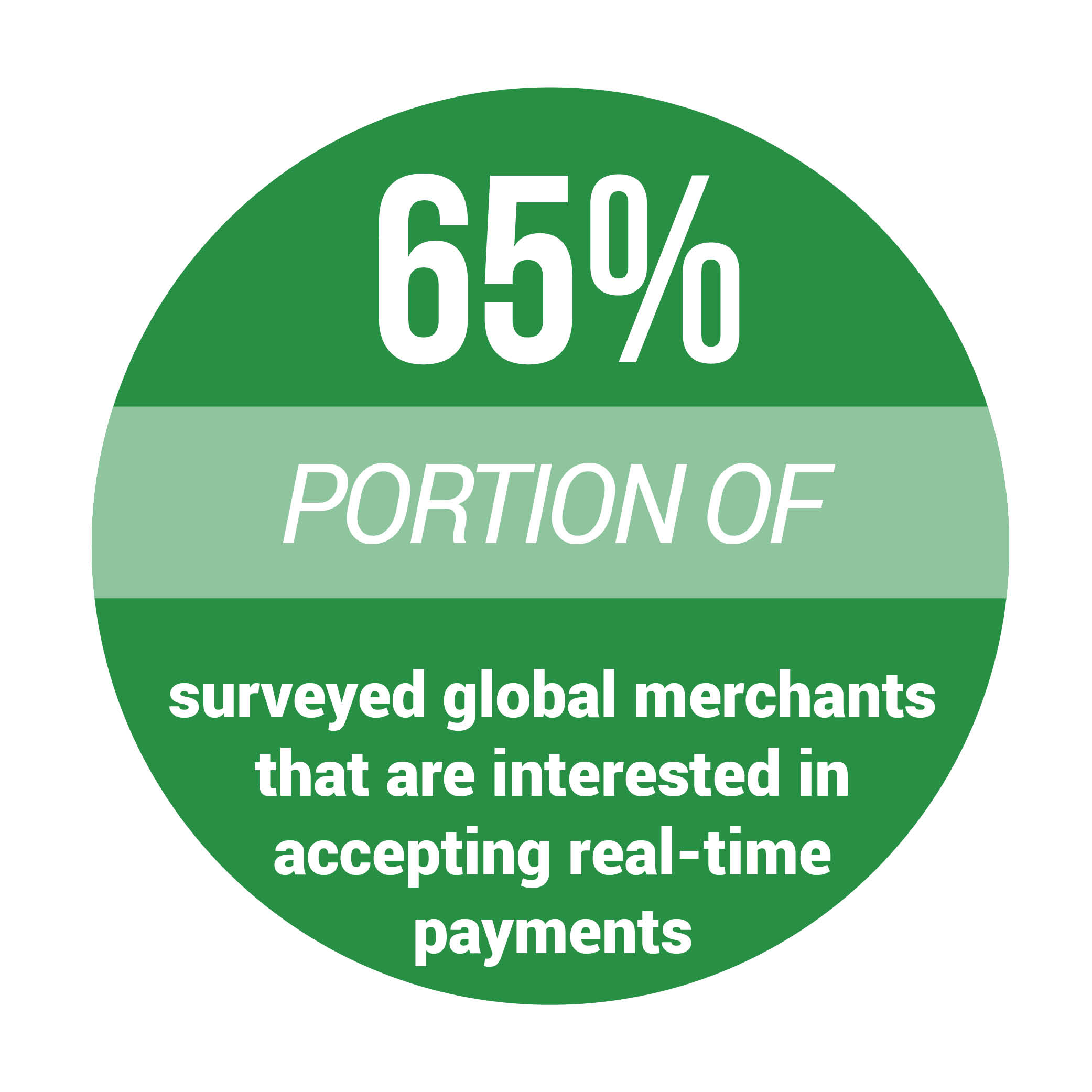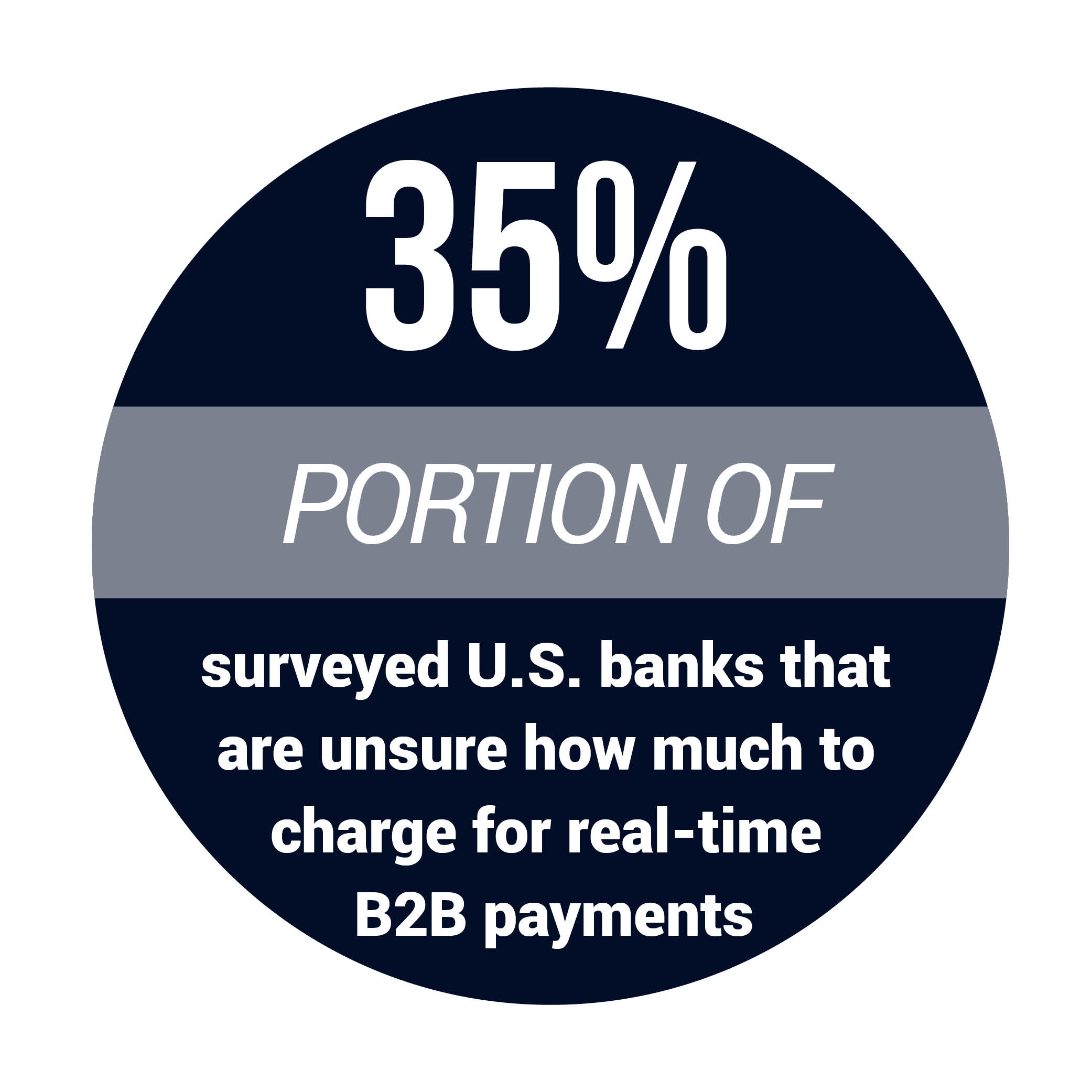TRENDING: Real-Time Payments Networks — For Real In Retail?
![]() Across the U.S., financial players are still exploring the best practices to offer faster payments to corporate clients. A recent survey of 20 of the nation’s top-60 banks found that there’s a lack of consensus among banks when it comes to managing and charging businesses for real-time payments.
Across the U.S., financial players are still exploring the best practices to offer faster payments to corporate clients. A recent survey of 20 of the nation’s top-60 banks found that there’s a lack of consensus among banks when it comes to managing and charging businesses for real-time payments.
However, efforts are underway to make adoption and use less friction-filled. These range from a new software tool intended to help banks offer Real-Time Payment services, to the Federal Reserve’s proposal to adopt a messaging standard that enables easier interactions between its real-time gross settlement system and other payment systems.
The August Faster Payments Tracker dives into these developments, plus how countries around the world are developing their payment schemes and working to make remittances and corporate payments move faster.
 Around The Faster Payments World
Around The Faster Payments World
In Europe, faster payment services are seeing increased adoption. The EBA Clearing House recently announced that its real-time payment service, RT1, gained six new members, including two German savings banks. The additions extend the payments system to 1,000 addressable payment service providers, up from 600.
Meanwhile, Africa saw a regional payments system gain new momentum. Central Africa’s regional electronic money transfer platform, GIMAC, recently signed a deal with B2B mobile wallet transaction company TerraPay to support instant cross-border remittances within the Central African Economic and Monetary Community. The remittances will transfer into bank accounts and mobile wallets.
Singapore is also encouraging expansion of faster payments, with its central bank recently announcing new capabilities intended to support faster corporate payments. The Monetary Authority of Singapore announced that its peer-to-peer (P2P) digital real-time payments service, PayNow, will soon support corporate payments as well.
Can The U.K.’s Fa ster Payments Support Everyday Retail?
ster Payments Support Everyday Retail?
The U.K.’s Faster Payments Service is at a turning point, as players in the space seek to take what was originally designed as an interbank rail and apply it to everyday business transactions. A number of U.K. retailers are looking for cheaper, faster alternatives to card-based payments, and some financial players think the Faster Payments rail could be key. But that introduces new complexities, says Marion King, director of payments for NatWest. The bank is currently piloting a payment method that enables consumers to click a button online at checkout to pay merchants instantly through their bank account.
In this month’s feature story, King explains that bringing real-time payments to everyday consumer shopping requires the establishment of new protocols to handle situations where customers are dissatisfied with their purchases. Plus, King dives into the impact of moving the Faster Payments scheme under the New Payment System Operator’s (NPSO’s) control, and what else may be in store for the scheme in the near future, including new digital channels for accessing it.
For the full story, download the Tracker.
Faster Payments
The Faster Payments Tracker™ is the go-to resource for staying up to date on a month-by-month basis. The Tracker highlights the contribution of different stakeholders, including institutions and technology coming together to make this happen.
